Derek's Ham Radio Page
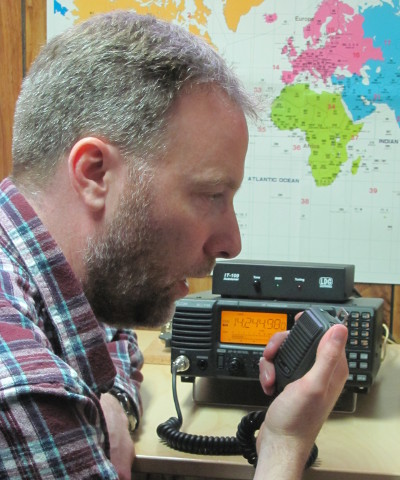
I have been licensed for a few decades as a ham radio operator, first with a license in Canada (VE3 land), and more recently with an Amateur Extra license in the U.S. What I like about ham radio is that it combines technical knowledge with conviviality. In her 1989 Massey Lectures on technology, Ursula Franklin suggested that ham radio is "personal, reciprocal, direct... It is a dependable and resilient source of genuine communication."
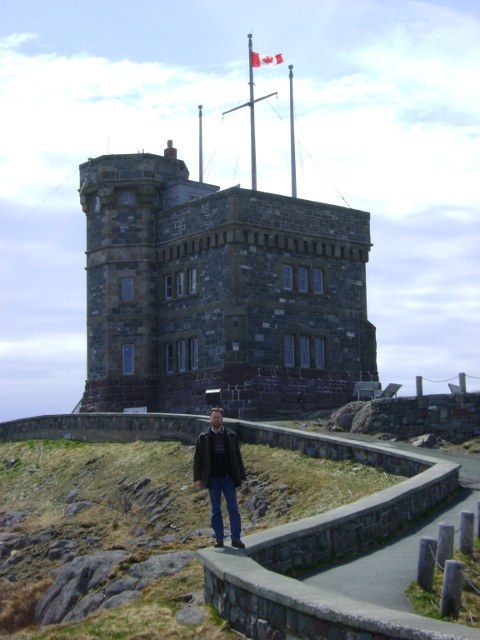 On the right is an image of me visiting Signal Hill where
trans-oceanic radio communications had their beginning.
I have always had a fondness for radio technology, and as a teenager became a ham radio operator.
I have
written about my attraction to ham radio as a hobby, describing how it started as a hobby and led to a vocation.
On the right is an image of me visiting Signal Hill where
trans-oceanic radio communications had their beginning.
I have always had a fondness for radio technology, and as a teenager became a ham radio operator.
I have
written about my attraction to ham radio as a hobby, describing how it started as a hobby and led to a vocation.
There is a wide variety of open source software available for hams, and I have created some of my own. In particular, I wrote JTmap, a program that listens to packets sent by WSJT-X, queries online databases to retrive call and QTH information, and displays a friendly map with information after each contact is confirmed. I also make use of various other open source programs for amatuer radio running on a Raspberry Pi.
Radios
I like to work voice on the shortwave bands such as the 20, 40, and 80 meter HF bands using a multi-band G5RV antenna and a homemade end fed antenna strung up in my back yard. I also work various HF digital modes (including PSK31, FT8 WSPR), initially uisng a homemade interface to a Raspberry Pi, but more recently using a drierct USB connection to an IC-7300 radio.
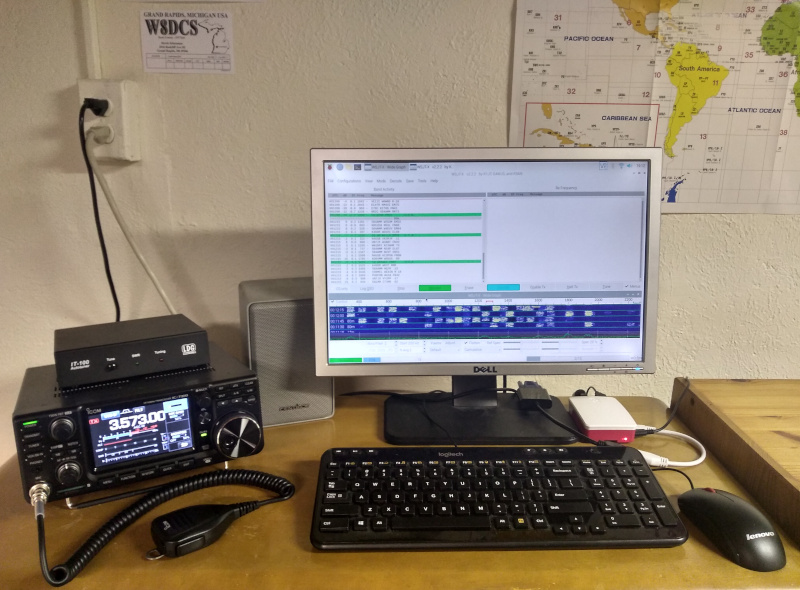
My current shack: HF rig, auto tuner, and Raspberry Pi
Digital Modes

A "Waterfall" plot showing some FT8 signals on HF
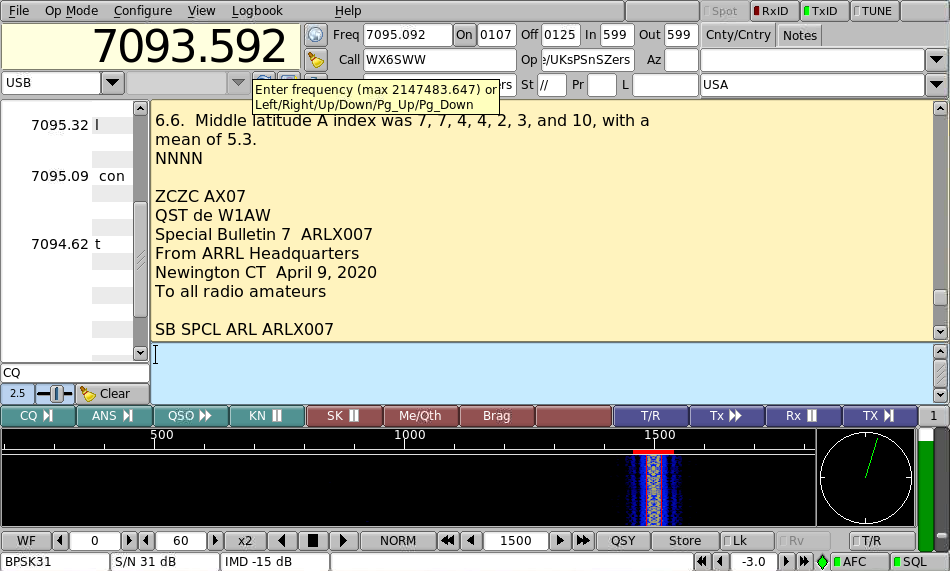
Exploring digital modes on HF (fldigi running on a Raspberry Pi decoding a PSK31 signal)
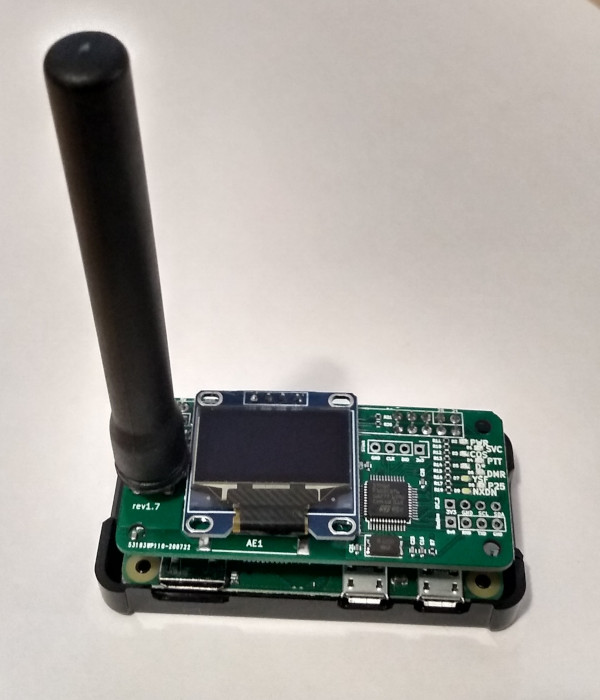
MMDVM on Raspberry Pi Zero |
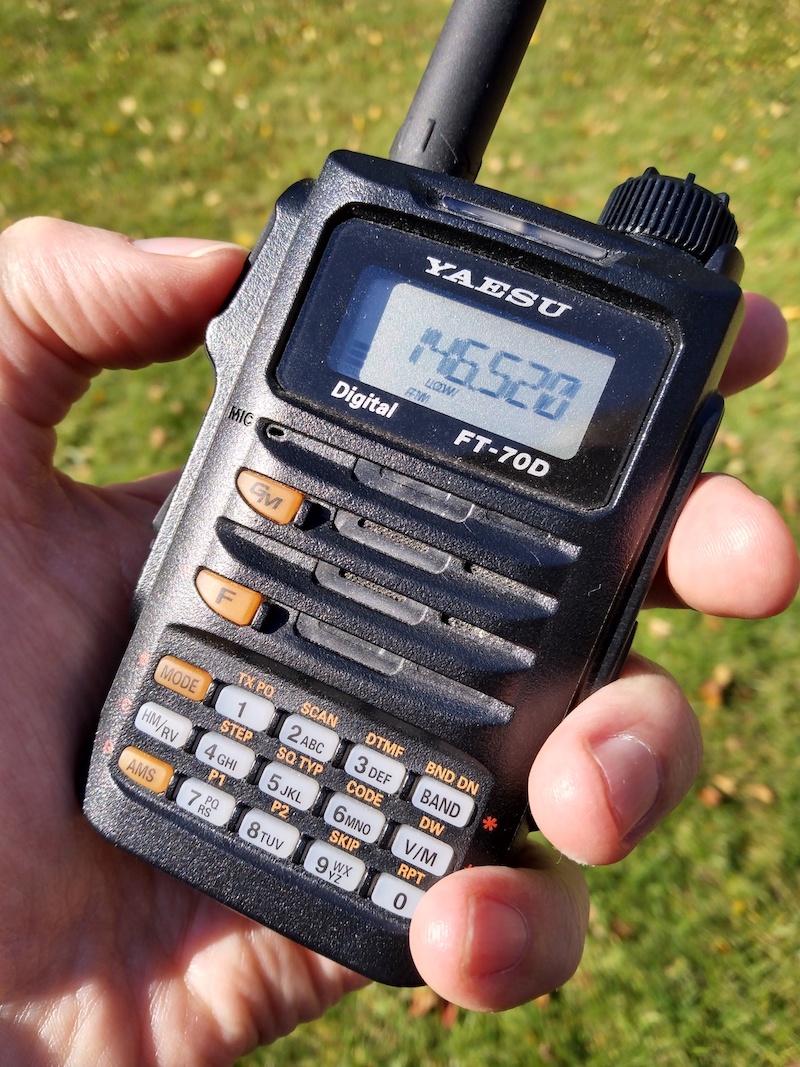
VHF/UHF handie-talkie with digital modes |
Antennas
Antennas are a critical part of an effective ham radio station. I have used modest wire antennas for shortwave contacts. These antennas are not only of modest cost, but are more discrete, blending into the foliage of my yard. I have buitl my own endfed antenna, but mostly I have been using an off-center-fed dipole.
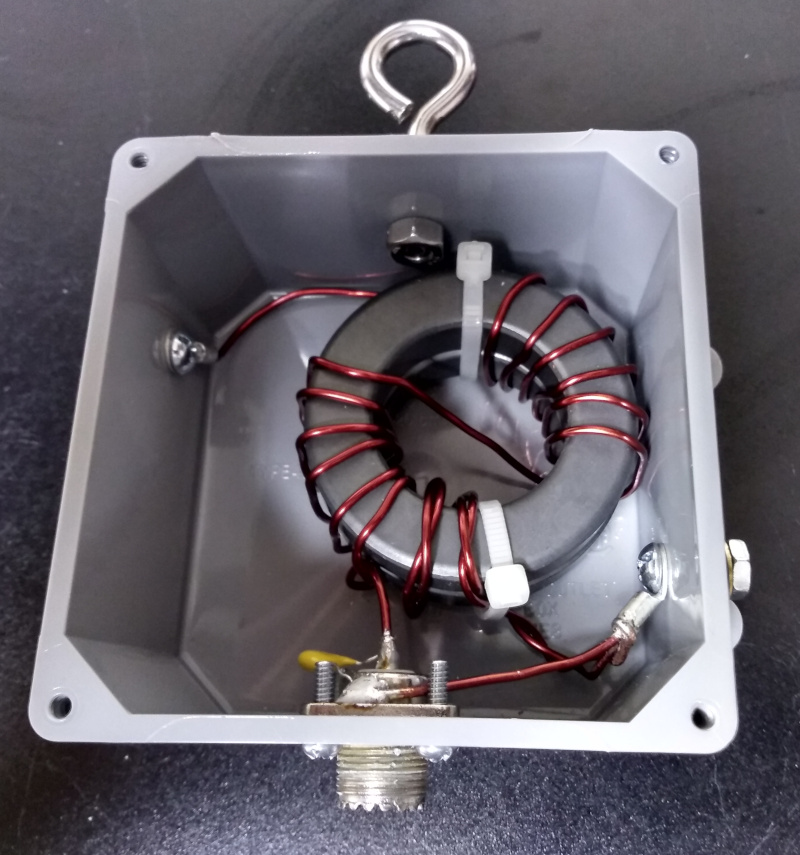
Homemade matching transformer for an endfed antenna |
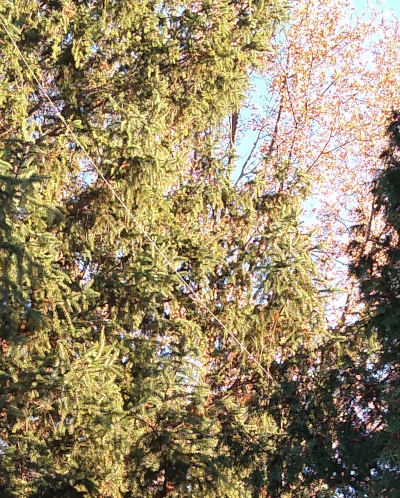
Sloping Endfed antenna suspended in a tree. |
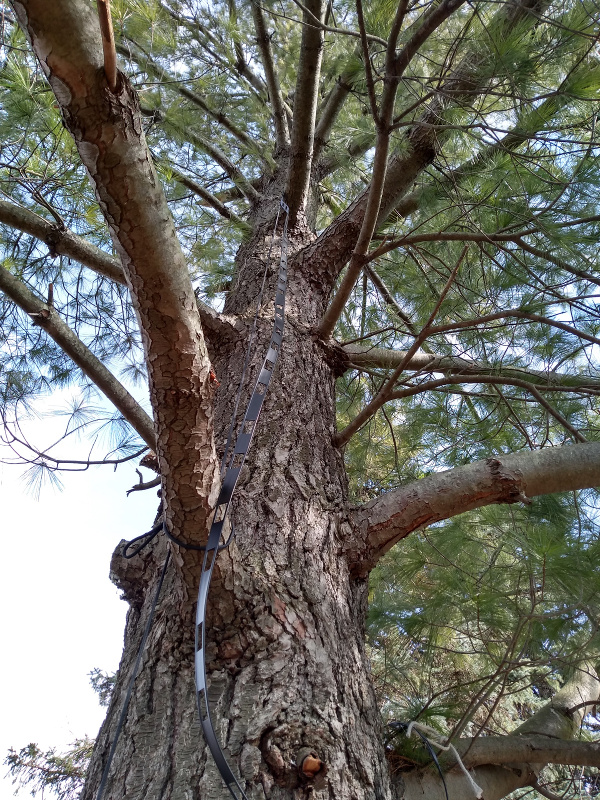
Ladder line of full G5RV suspended in tree |
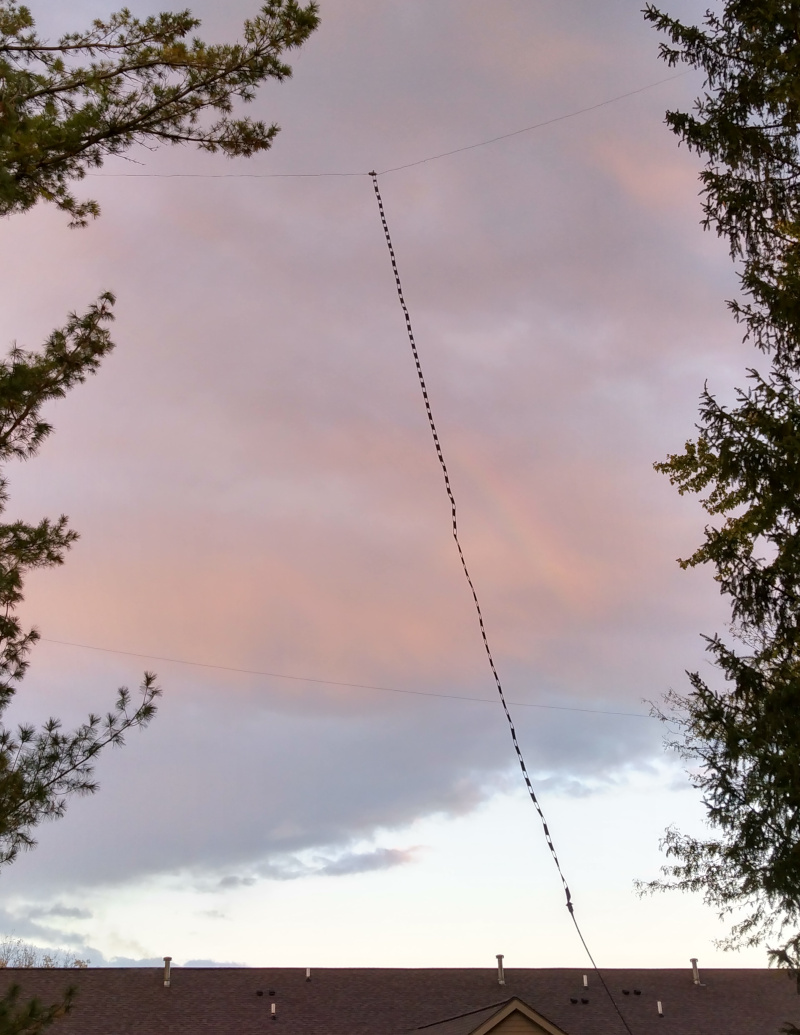
G5RV junior antenna with ladder line and rainbow |
Some of my previous rigs
My first HF transmitter was a "home-brew" 80m CW rig using a single 815 (dual pentode) tube. It was built on a piece of wood with point-to-poimt wiring, a hand-wound output transformer, and an air-variable capacitor. It was originally fed by a home-made crystal oscillator (I actually used a colorburst crystal), but later moved up to an old external VFO someone lent me. A picture of that first rig and some former rigs I have owned are shown below.

My first rig: an 80m "home-brew" transmitter |
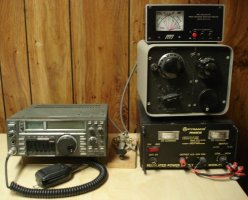
IC-735 station |
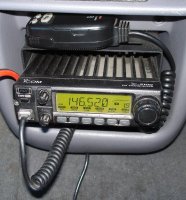
IC-2100 VHF Mobile Rig |
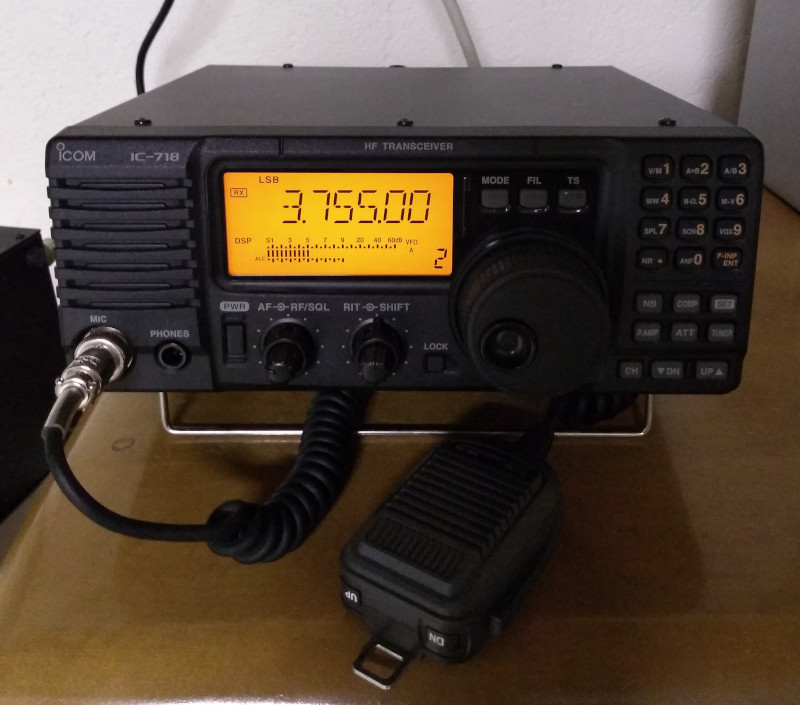
IC-718 HF Rig |
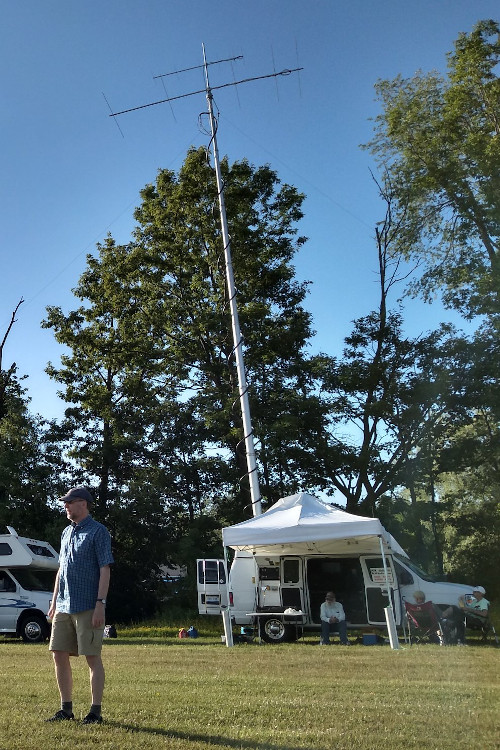 Amateur radio operators are involved in many public service activites, from
severe weather monitoring to
assisting with emergency communications in a time of crisis.
Amateur radio operators are involved in many public service activites, from
severe weather monitoring to
assisting with emergency communications in a time of crisis.
Amateur radio operators also organize local clubs, launch experimental satellites, and organize events like "hamests" and field day (the photo on the left is one of me during the 2020 field day).
To find out more about the fascinating world of Amateur Radio, visit this ARRL site which introduces the hobby.